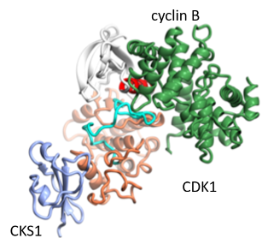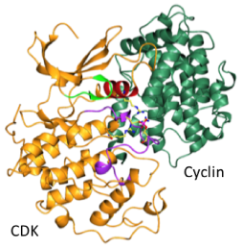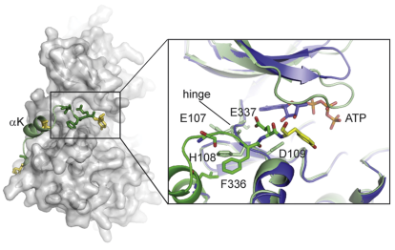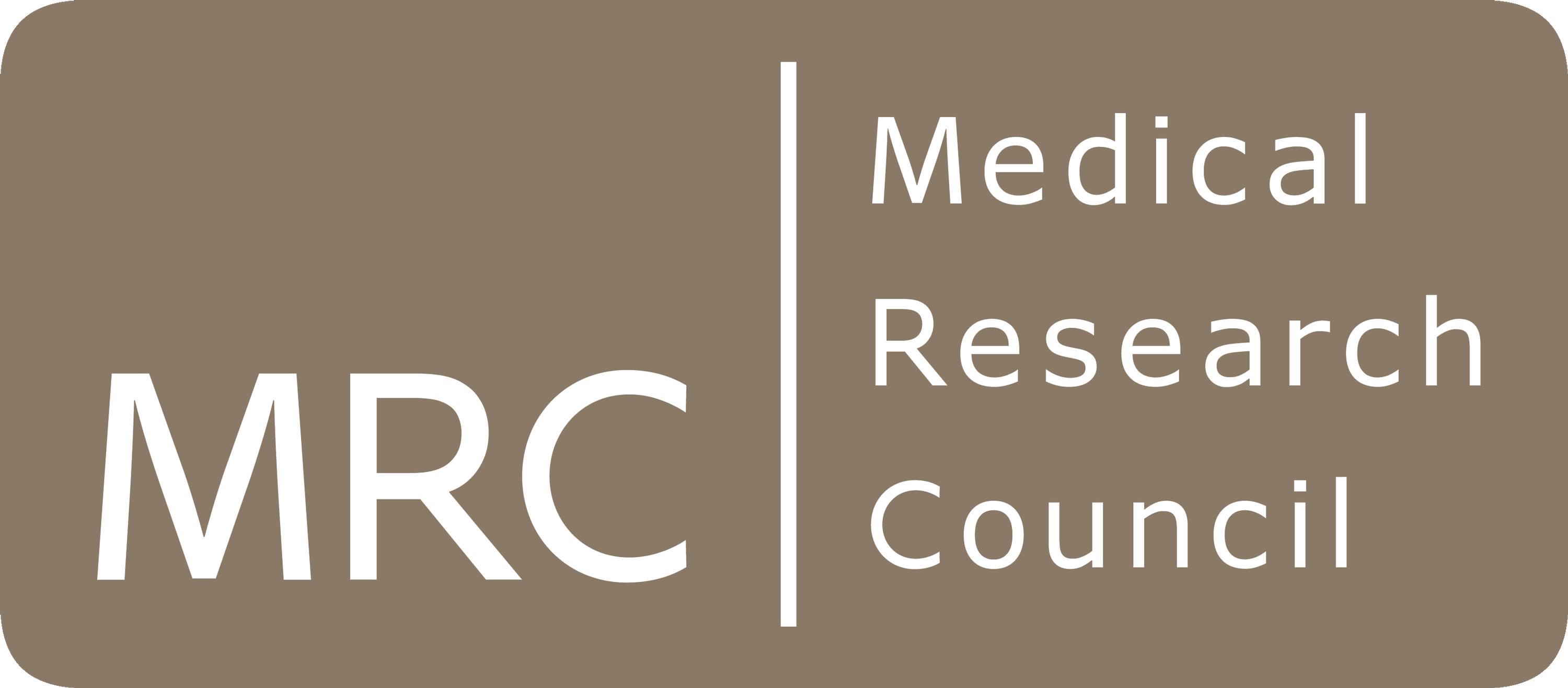CDK structure and function
In the mitotic cell cycle, sequential waves of CDK-cyclin activity (CDK1, CDK2, CDK4 and CDK6) promote and co-ordinate alternating rounds of DNA replication and chromosome segregation and respond to checkpoint pathways to ensure the genomic integrity of each daughter cell. Coordinated phosphorylation of the RNA polymerase II (Pol II) C-terminal domain by CDK7, CDK8 and CDK9 acting within large macromolecular complexes regulates Pol II activity and its assembly with transcription factors and regulators to control transcription initiation and elongation. We take a comparative approach to better understand CDK structures: to identify and characterise their conserved and divergent structural features that distinguish them and to provide a starting point from which to understand their mechanisms of action and regulation. Recent work has focussed on CDK1, CDK4 and CDK9. Click here to go to a recent review that compares the members of the CDK family family to illustrate how their structural diversity impacts function.





